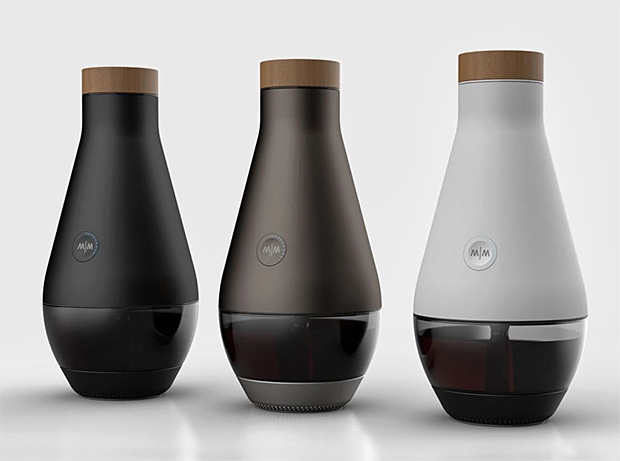Still waiting for miracle
The Miracle Machine
March 17, 2014
Turning water into wine was considered a miracle until the invention of a wine-making machine suggested it could be done without the help of divine intervention. This invention, as it turns out, was a hoax.
Wine industry experts Kevin Boyer and Philip James advertised the Miracle Machine as an at-home device that could produce a bottle of wine using only grape concentrate, yeast and a packet of secret ingredients. In a matter of days, at-home users would have a product equivalent to a $10 bottle of wine, according to the Miracle Machine website.
On March 12, the website posted a video explaining that the machine had been part of a campaign to raise awareness for Wine to Water, an organization that provides clean water to people around the world.
Josh Elliott, media coordinator for Wine to Water, said MSLGROUP, the world’s fourth-largest public relations firm, approached the organization with the concept of the Miracle Machine to promote its clean water mission.
“We finally came to the conclusion that in today’s world it’s really hard to get out your mission or message unless you do it in a very spectacularly unique way,” Elliott said. “Our goal was to reach new people and tell them about the water crisis.”
The device gained international attention within weeks of the website’s launch. More than 200,000 people watched the original video detailing the specifics of the machine, 600 media outlets covered the story and 6,000 people tweeted about it, according to the website. Elliott said he knew it would be a hot topic.
The product’s popularity was no surprise to Matt Brain, lecturer and cellar master in the Wine and Viticulture Department at California Polytechnic State University. He said wine culture has become increasingly prominent throughout the U.S.
“There are so many American wines on shelves,” Brain said. “We have such a high production in California in terms of world producers. In the wine regions … there’s a huge presence there.”
But as the faux machine’s popularity peaked, so did skepticism among enologists and viticulturists. The website referred to the Miracle Machine’s final product as wine. However, Andrew Waterhouse, professor of enology, at University of California, Davis, said the drink could not legally be called wine because wine is made from grapes. Avery Heelan, a graduate student at University of California, Davis, said users would only be adding an artificial flavor in the form of grape juice concentrate.
Jim Harbertson, associate professor of enology at the School of Food Science at Washington State University, said the technology used makes him question the overall quality of the drink.
The actual science behind the Miracle Machine was kept secret, but the website offered a few details about its fermentation chamber. Electrical sensors, transducers, heaters and pumps would have been used to manipulate the fermentation process and flavor development of the “wine.”
Harbertson said the process of making a fine wine is more difficult and that certain fruits are chosen based on their soluble solids and sugars to produce the best flavor. Stylistic choices also have a role in making a fine wine. Fermentation can be done in a stainless steel tank or a barrel, which can give the wine an oaky flavor. The process is usually done by adding freeze-dried yeast, but some producers add nitrogen or vitamins and nutrients to the yeast to ensure the wine ferments correctly, he said.
“Since it’s such a large commodity and it’s worth so much money and value, a lot more people are taking insurance to add things to it to make sure the fermentation is completed,” Harbertson said.
There have been many technical improvements in manipulating the flavor of wine during the fermentation process, Waterhouse said. He said fermenting at different temperatures and keeping the grape skins in contact with the juice for a greater length of time can give the wine different flavors.
Brain said he thinks the product was a good idea because it provided users with education and participation. If people felt they were a part of the process, they could enjoy the wine more, he said. The organization thinks the campaign was beneficial to their cause, Elliott said.
“For us, if one life is saved from this campaign, then it was well worth it,” Elliott said. “If it’s talked about, then we can generate more awareness for the world’s biggest problem of a lack of clean water.”








